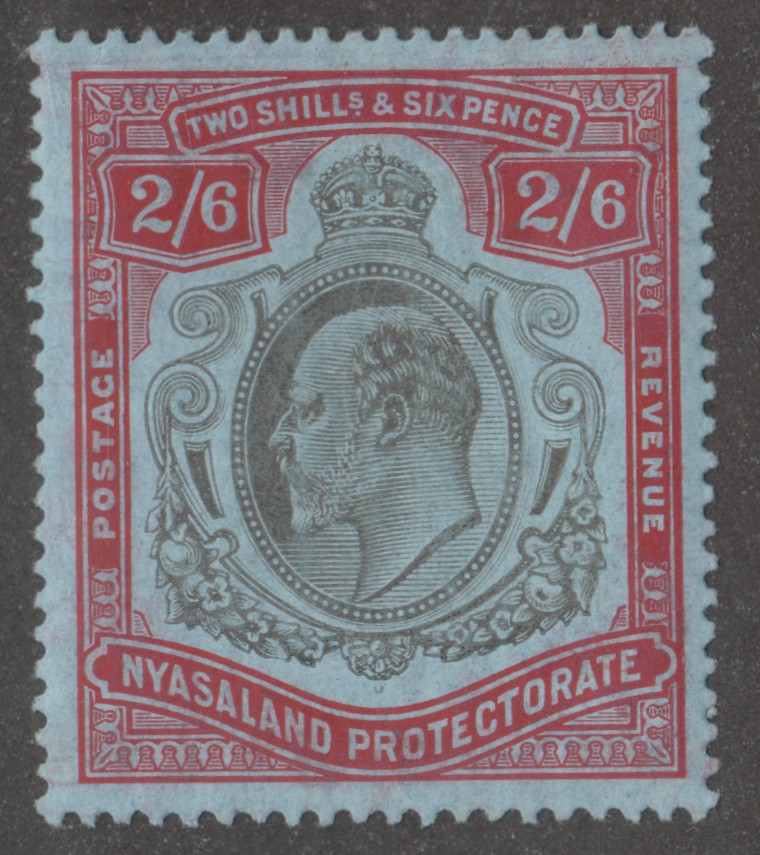
Discussion - Member to Member Sales - Research Center

Discussion - Member to Member Sales - Research Center

Can you explain these inconsistencies to me?



Login to Like
this post
The stamp paper looks to be toned, I consider the paper color to be the least dependable method of identification (especially on used stamps).
I concur with your IDs on both stamps, hard paper based upon perf cuts/tips. Fiber content varied from batch to batch.
Don

Login to Like
this post
Thank you Don for your response and for stampsmarter-very helpfull for me.

Login to Like
this post
Thank you for the kind words. If you have not already seen it, note this article on hard/soft paper types
http://stampsmarter.com/learning/Manuf_BankNotePaperTypes.html
The 'backlight' method shown on this page might confirm the paper types for your stamps. There is always the traditional and tactile 'snap' test but that can be a bit subjective and can also be slightly influenced by the relative humidity during the test.
Don

Login to Like
this post
Excelent article Don.More informations for identify type of paper.
The textile/silk fibers on paper are usual for US stamps?For european stamps the presence of these fibers make difference (great difference)for the value stamps.Thank you again

Login to Like
this post
US paper consistency has long been a debated subject by folks far more knowledgeable than myself. My observations is that there is varying levels of extraneous ‘stuff’ (inclusions, different color strands, etc) in US paper of this era. I have read a theory that color threads from the sacks certain materials use in paper manufacturer ending up in the paper slurry as it was being made and then ultimately ended up in a stamp. ‘Clay’ paper is another US paper topic which draws many opinions. Some saying it is a real paper type while other propose it was simply dirty water pulled from the bottom of the holding ponds at the paper manufacturing company. And then of course you have the true silk papers for some US revenue stamps.
For myself, I leave this level of in depth study for other folks; if I run across anything that really stands out to me I send it in for a cert. From what I can tell from your original images, I do not see anything that jumps out at me. Back lighting the stamps might reveal more, if so you might want to send them into an expert for feedback.
Don

Login to Like
this post
I don't send the stamps to an expert.Simply I want know what stamps I have in collection.I buy these stamps a two year ago and until today their identification was US xxxx.

Login to Like
this post
08:16:04am
I think I correctly identified the 2 stamps (perf.12, wove paper, 0.07 and 0.06 mm thick) but I need your confirmation because the paper has the same color (not yellow and white) and the paper stamp of 5c has small textile fibers.
Can you explain these inconsistencies to me?



Login to Like
this post

re: US Stamps Scott 150 and 179?
The stamp paper looks to be toned, I consider the paper color to be the least dependable method of identification (especially on used stamps).
I concur with your IDs on both stamps, hard paper based upon perf cuts/tips. Fiber content varied from batch to batch.
Don

Login to Like
this post
09:45:27am
re: US Stamps Scott 150 and 179?
Thank you Don for your response and for stampsmarter-very helpfull for me.

Login to Like
this post

re: US Stamps Scott 150 and 179?
Thank you for the kind words. If you have not already seen it, note this article on hard/soft paper types
http://stampsmarter.com/learning/Manuf_BankNotePaperTypes.html
The 'backlight' method shown on this page might confirm the paper types for your stamps. There is always the traditional and tactile 'snap' test but that can be a bit subjective and can also be slightly influenced by the relative humidity during the test.
Don

Login to Like
this post
10:58:15am
re: US Stamps Scott 150 and 179?
Excelent article Don.More informations for identify type of paper.
The textile/silk fibers on paper are usual for US stamps?For european stamps the presence of these fibers make difference (great difference)for the value stamps.Thank you again

Login to Like
this post

re: US Stamps Scott 150 and 179?
US paper consistency has long been a debated subject by folks far more knowledgeable than myself. My observations is that there is varying levels of extraneous ‘stuff’ (inclusions, different color strands, etc) in US paper of this era. I have read a theory that color threads from the sacks certain materials use in paper manufacturer ending up in the paper slurry as it was being made and then ultimately ended up in a stamp. ‘Clay’ paper is another US paper topic which draws many opinions. Some saying it is a real paper type while other propose it was simply dirty water pulled from the bottom of the holding ponds at the paper manufacturing company. And then of course you have the true silk papers for some US revenue stamps.
For myself, I leave this level of in depth study for other folks; if I run across anything that really stands out to me I send it in for a cert. From what I can tell from your original images, I do not see anything that jumps out at me. Back lighting the stamps might reveal more, if so you might want to send them into an expert for feedback.
Don

Login to Like
this post
01:10:59pm
re: US Stamps Scott 150 and 179?
I don't send the stamps to an expert.Simply I want know what stamps I have in collection.I buy these stamps a two year ago and until today their identification was US xxxx.

Login to Like
this post

